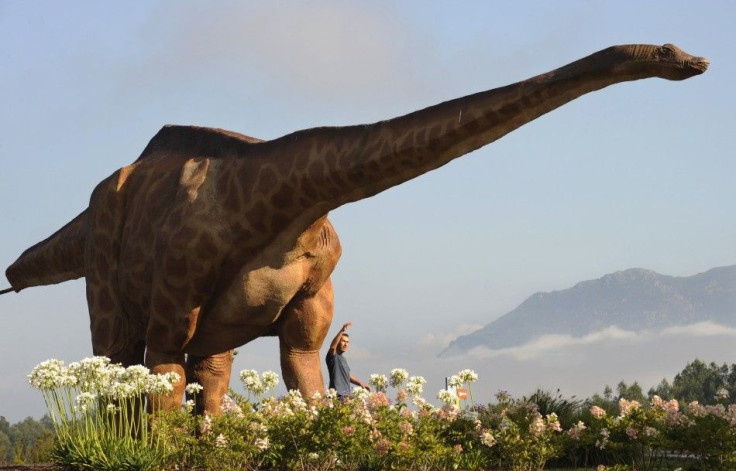Did Giant Earth Fart Give Rise to the Dinosaurs?

A huge release of methane gas may have triggered the prehistoric mass extinctions that allowed dinosaurs to become the dominant life form on earth, according to a new study.
About 201 million years ago, half of known species vanished in an event that signaled the end of the Triassic period and created the lack of natural competition necessary for the ascendance of dinosaurs. The oldest known dinosaur fossiles date back Fto about 230 million years ago, but they do not take over until about 30 million years later.
Scientists had attributed the mass extinctions to 600,000 years of rampant volcanic activity, but a team of researchers at the University of Copenhagen's Nordic Center for Earth Evolution develop that theory further by arguing that a surge in volcanic activity released methane trapped in the sea floor, sending temperatures soaring.
A small release of carbon monoxide from volcanism initiated global warming of the atmosphere, increasing temperatures in the oceans, lead researcher Micha Ruhl told FoxNews.com. Methane is stored in the sea floor -- it's a molecule which is caught in some kind of ice structure. As soon as the temperatures got above a certain threshold, the ice melted and that methane was released.
Ruhl and his team studied the chemical remains of plants that had lived on the ocean floor and found a dramatic spike in carbon levels that lasted for a much shorter time than the period of volcanic eruptions, suggesting a shorter, more intense release of methane gases. Methane is more powerful than the carbon monoxide released by the volcanoes, and could have created a period of intense warming.
Most of the methane on earth is trapped in soil and seabeds. Ruhl said that it is possible that sharply rising carbon dioxide levels caused by burning fossile fuels might free some of that methane, but he cautioned that conditions are too different today -- given, for example, the lack of glaciers in the Triassic period -- to speculate too much.
We could potentially trigger a small increase in ocean temperatures, which triggers methane release, said Ruhl. But it's difficult to quantify how much methane is in the ocean these days. Maybe we have less methane in seafloors now. Maybe we have more.
Must Read: Rare Dinosaur Fossil Found Complete in Alaska
© Copyright IBTimes 2025. All rights reserved.





















